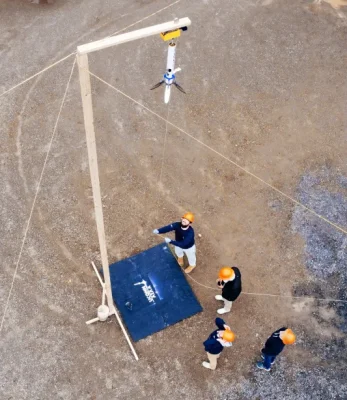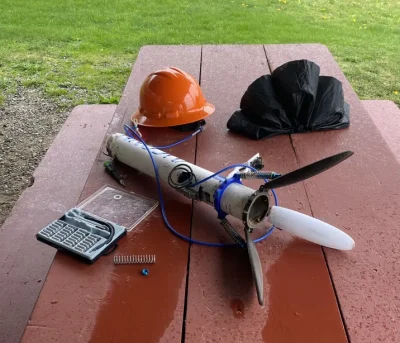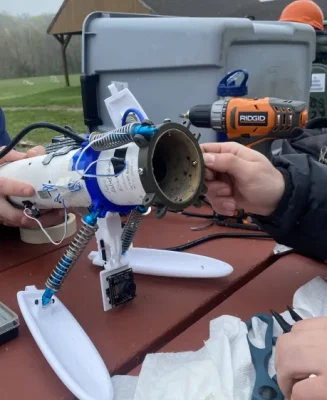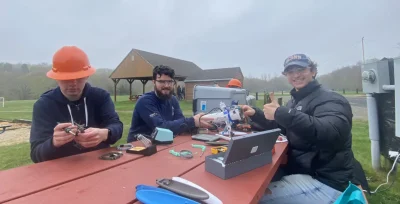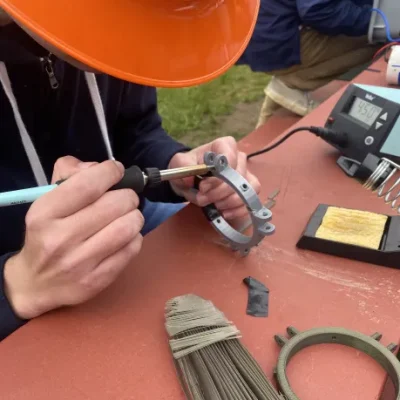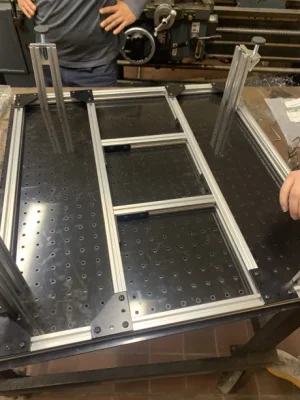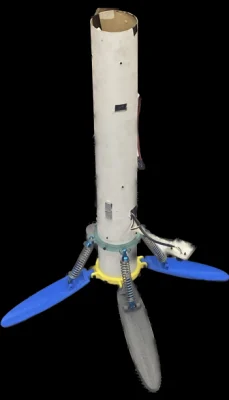About PL:
We are UConn Propulsive Landing, the rocketry team at the University of Connecticut. We are a student run project team, within UConn's AIAA branch. We are working to become the first collegiate team to achieve soft rocket landings with propulsion. We are designing an actively stabilized model rocket that uses thrust vector control (TVC) to keep itself vertical. We are printing and building many of the major components of the rocket including the TVC, avionics bay, landing legs, and nosecone.
Testing:
We build autonomous, scale-size, thrust-vectoring rockets with the ultimate goal of consistently achieving launch and landing missions. This involves building the mechanical systems, algorithms, software, and electronics needed to land. Currently we do three major types of tests, static fires (validates the thrust curves for the rocket motors), stability stand tests (confirms our TVC and flight computer can stabilize our rocket), and launch / land tests (tests all components in flight conditions and informs changes needed for future flights).

Pictured Above: Apr. 30, 2023. Successful stabilization during drop test
Team Members
Liam Mohan - Team Lead
Patrick Iannetta - Mechanical Lead
Abhiram Gunti - Avionics Lead
Gabriel Koleszar - Business Lead
Harrison Perone - GNC Lead
Caleb Heydon - Team Historian
Timothy Aman
Steven Andrejczyk
Aditya Awasthi
Jack Bogatz
Eric Brown
Koshik Dhotre
Joel Dominguez
Frederic Fladenmuller
Dakota Foytlin
Elena Hartley
Aidan Ladewig
Reis Muccino
Abraham Puente Cruz
Junaid Shah
Karan Rana
Madeline Ross
Mission:
Primary Goal: Our current technical goal as a team is successfully launching and landing a model rocket that uses TVC for both phases of flight. Specifically, we consider a landing to be a success if the rocket is upright on the ground without significant damage. Daily goals can include designing and manufacturing components, writing software, wiring electronics, running simulations, designing control systems, fundraising, and much more.
Given our current progress, it's possible we will need more than one stability stand test before we successfully stabilize our rocket again. In addition, we anticipate landing to be a significant challenge likely requiring several flights and design changes to perfect. Besides just wanting to land a model rocket, we are doing this because we are passionate about aerospace and want a way to contribute to a real world engineering project.
Phase 1 (COMPLETED): Starting from a ~25 foot tower, drop the rocket and have a controlled vertical landing.
Phase 2 (IN PROGRESS): Starting from a launch pad, use a two-stage motor system to launch the rocket up, then have a controlled vertical landing
Check out more about PL here.

Pictured Above: Safety procedures drop testing

Pictured above: UConn PL 2023 team picture
Picture above: PL test montage
Gallery
